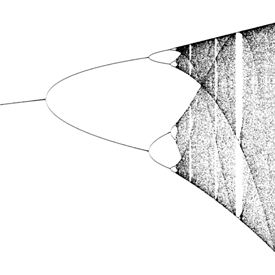 Way back in the 1980s, I was one of the first students to be taught chaos theory at university.
Way back in the 1980s, I was one of the first students to be taught chaos theory at university.At the time, the attitude of a number of proponents of the new science of complexity was that self-organization - rather than evolutionary adaptation - was actually responsible for some of the features of evolved organisms. This was a theme of both Kauffman and Wolfram - for example.
Many years down the line, a bit of a role-reversal seems to have taken place - with the rise of Universal Darwinism. It now appears that many of the features of organisms which were once attributed to self-organization are actually best understood as being due to Darwinian copying with variation and selection.
Some examples of phenomena which self-organization has lost to the new wave of Darwinism include:
 Notice the trees present in these phenomena. These trees are actually evolving lineages. Many self-organization systems without visible tree structures are also best understood as the product of Darwinian dynamics.
Notice the trees present in these phenomena. These trees are actually evolving lineages. Many self-organization systems without visible tree structures are also best understood as the product of Darwinian dynamics.
Even the branching tree-like self-similar structure of fractals takes on a new Darwinian significance when you realize that such fractals are made by an series of iterated self-copying processes from varying starting points, with selection. Nearby whorls in Julia and Mandelbrot sets look similar - because they are related. Another important concept in chaos theory is bifurcation diagrams. I reproduce one to the right. It is clearly a family tree. Adjacent branches represent close relatives.
While not every aspect of complex systems is illuminated equally by Darwinism, it now looks as though Darwinian evolution is the key unifying principle in the science of complexity - just as it is in so many other areas of science.










No comments:
Post a Comment